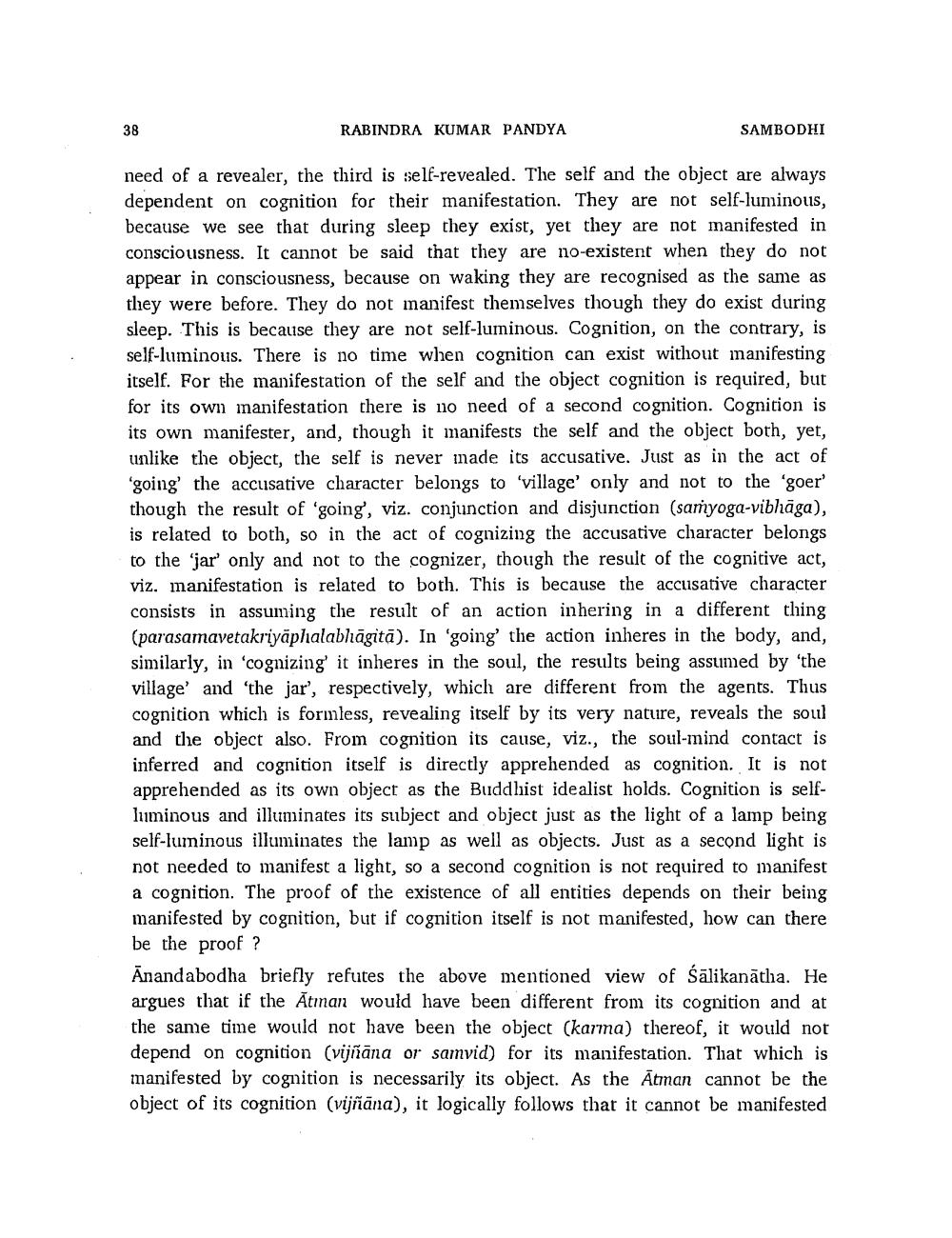________________
38
RABINDRA KUMAR PANDYA
SAMBODHI
need of a revealer, the third is self-revealed. The self and the object are always dependent on cognition for their manifestation. They are not self-luminous, because we see that during sleep they exist, yet they are not manifested in consciousness. It cannot be said that they are no-existent when they do not appear in consciousness, because on waking they are recognised as the same as they were before. They do not manifest themselves though they do exist during sleep. This is because they are not self-luminous. Cognition, on the contrary, is self-luminous. There is no time when cognition can exist without manifesting itself. For the manifestation of the self and the object cognition is required, but for its own inanifestation there is 110 need of a second cognition. Cognition is its own manifester, and, though it manifests the self and the object both, yet, unlike the object, the self is never inade its accusative. Just as in the act of
going the accusative character belongs to 'village' only and not to the 'goer though the result of 'going, viz. conjunction and disjunction (samyoga-vibhāga), is related to both, so in the act of cognizing the accusative character belongs to the 'jar' only and not to the cognizer, though the result of the cognitive act, viz. manifestation is related to both. This is because the accusative character consists in assuming the result of an action inhering in a different thing (parasamavetakriyaphalabhāgitā). In 'going' the action inheres in the body, and, similarly, in 'cognizing it inheres in the soul, the results being assumed by the village' and 'the jar', respectively, which are different from the agents. Thus cognition which is formless, revealing itself by its very nature, reveals the soul and the object also. From cognition its cause, viz., the soul-mind contact is inferred and cognition itself is directly apprehended as cognition. It is not apprehended as its own object as the Buddhist idealist holds. Cognition is selfluminous and illuminates its subject and object just as the light of a lamp being self-luininous illuminates the lamp as well as objects. Just as a second light is not needed to manifest a light, so a second cognition is not required to manifest a cognition. The proof of the existence of all entities depends on their being manifested by cognition, but if cognition itself is not manifested, how can there be the proof? Anandabodha briefly refutes the above mentioned view of śālikanātha. He argues that if the Atman would have been different from its cognition and at the same time would not have been the object (karma) thereof, it would not depend on cognition (vijñāna or samvid) for its manifestation. That which is manifested by cognition is necessarily its object. As the Atman cannot be the object of its cognition (vijñāna), it logically follows that it cannot be manifested




